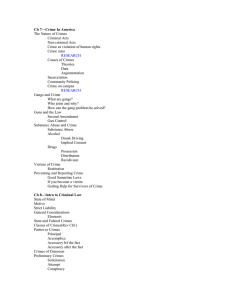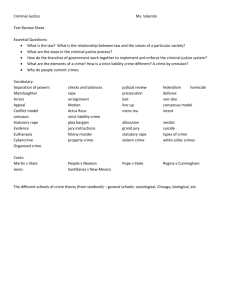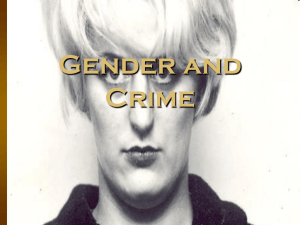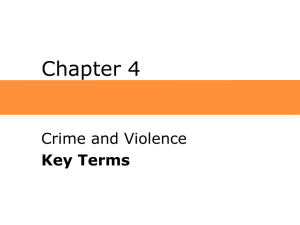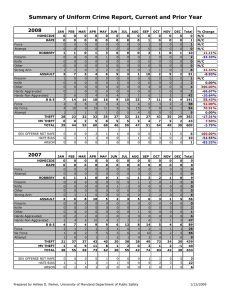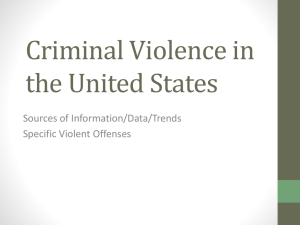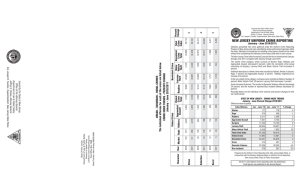Critical Theory What critical theories have in common Gist of radical
advertisement
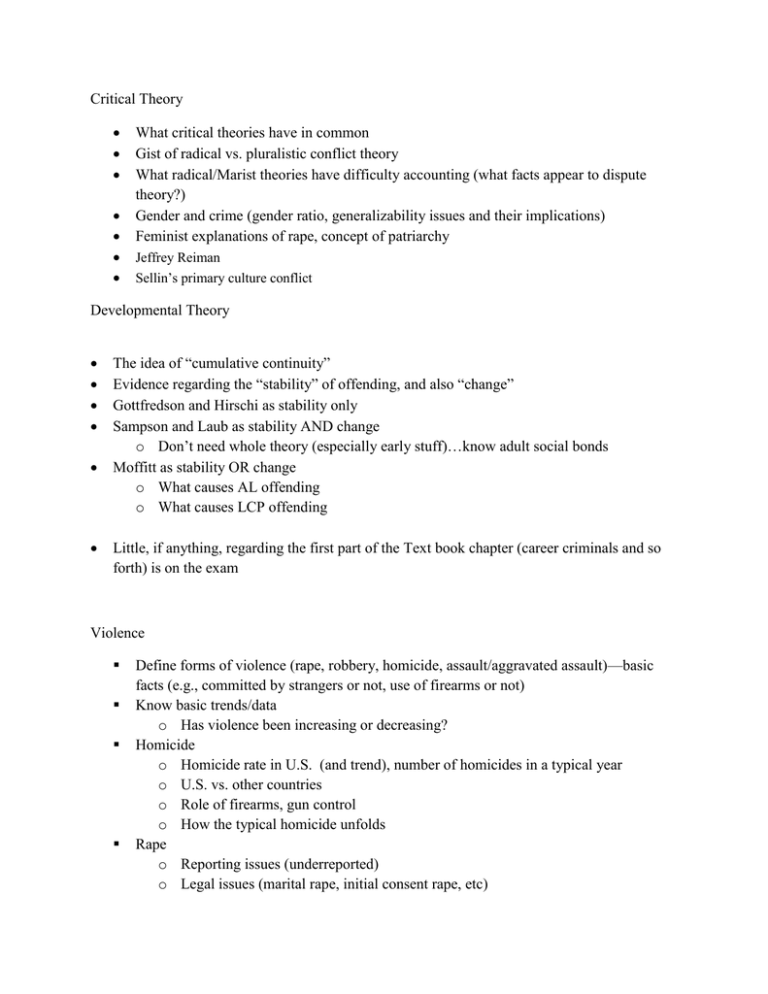
Critical Theory What critical theories have in common Gist of radical vs. pluralistic conflict theory What radical/Marist theories have difficulty accounting (what facts appear to dispute theory?) Gender and crime (gender ratio, generalizability issues and their implications) Feminist explanations of rape, concept of patriarchy Jeffrey Reiman Sellin’s primary culture conflict Developmental Theory The idea of “cumulative continuity” Evidence regarding the “stability” of offending, and also “change” Gottfredson and Hirschi as stability only Sampson and Laub as stability AND change o Don’t need whole theory (especially early stuff)…know adult social bonds Moffitt as stability OR change o What causes AL offending o What causes LCP offending Little, if anything, regarding the first part of the Text book chapter (career criminals and so forth) is on the exam Violence Define forms of violence (rape, robbery, homicide, assault/aggravated assault)—basic facts (e.g., committed by strangers or not, use of firearms or not) Know basic trends/data o Has violence been increasing or decreasing? Homicide o Homicide rate in U.S. (and trend), number of homicides in a typical year o U.S. vs. other countries o Role of firearms, gun control o How the typical homicide unfolds Rape o Reporting issues (underreported) o Legal issues (marital rape, initial consent rape, etc) o Levels of rape (lifetime prevalence, college campus study) o Motivations for rape Robbery o Trends o Robbery victims (most vulnerable) o Robber characteristics (how different from other crimes) Assault/aggravated assault (difference between them) o Trends o Prevalence (compared to other violent offenses) Property Crime Define all type of property crime Burglary vs. robbery Fence Most common types of property crime NCVS vs. UCR measures of burglary Clearance rates for most property offenses Public Order offenses Define Types and examples How policing is related to public order offenses Drug Crimes Types of drug crimes (e.g., drug related and so forth)…don’t worry about “Goldstein Models” Legalization debate (basic parameters) History of drug use o How far back does drug use go o Drug panics American use/trends o Sources of drug data o What drugs to Americans use regularly and what percent (generally) regularly use soft and hard illicit drugs (see slide) White collar and organized crime Organized Crime o Types (e.g., mafia vs. other forms) o Activities of organized crime families o Alien conspiracy vs. ethnic group/family models o Attempts to control (federal legislation, strategies) Define WCC and types o Organizational, Corporate, Occupational o Examples of famous cases/scandals WCC vs. street crime (which causes more harm?) Law Enforcement History o First police departments (where formed, why, what were first departments like) Organization o State, Federal, County, Municipal Activities (effectiveness where appropriate) o Patrol, investigation o Reactive/proactive o “Bullshit work” or “handling the situation” Policing models (e.g., COP, POP, Broken windows) and how implemented Procedural laws (e.g., Miranda, exclusionary rule, etc.) Courts Structure/organization o U.S. supreme court appointments/justices o Types of courts Players in court and the jobs/roles of each Courtroom Workgroup, Wedding cake model, administrative justice Sentencing guidelines Sentencing disparity Corrections History o Nature of Colonial punishment, why build first prisons, PN vs AB models Determinate vs. Indeterminate Organization / types o Jails vs. Prison (differences, how used) o Federal vs. State Levels and trends o # inmates in prison and jail o % on probation vs. prison Intermediate sanctions o Types, effectiveness
